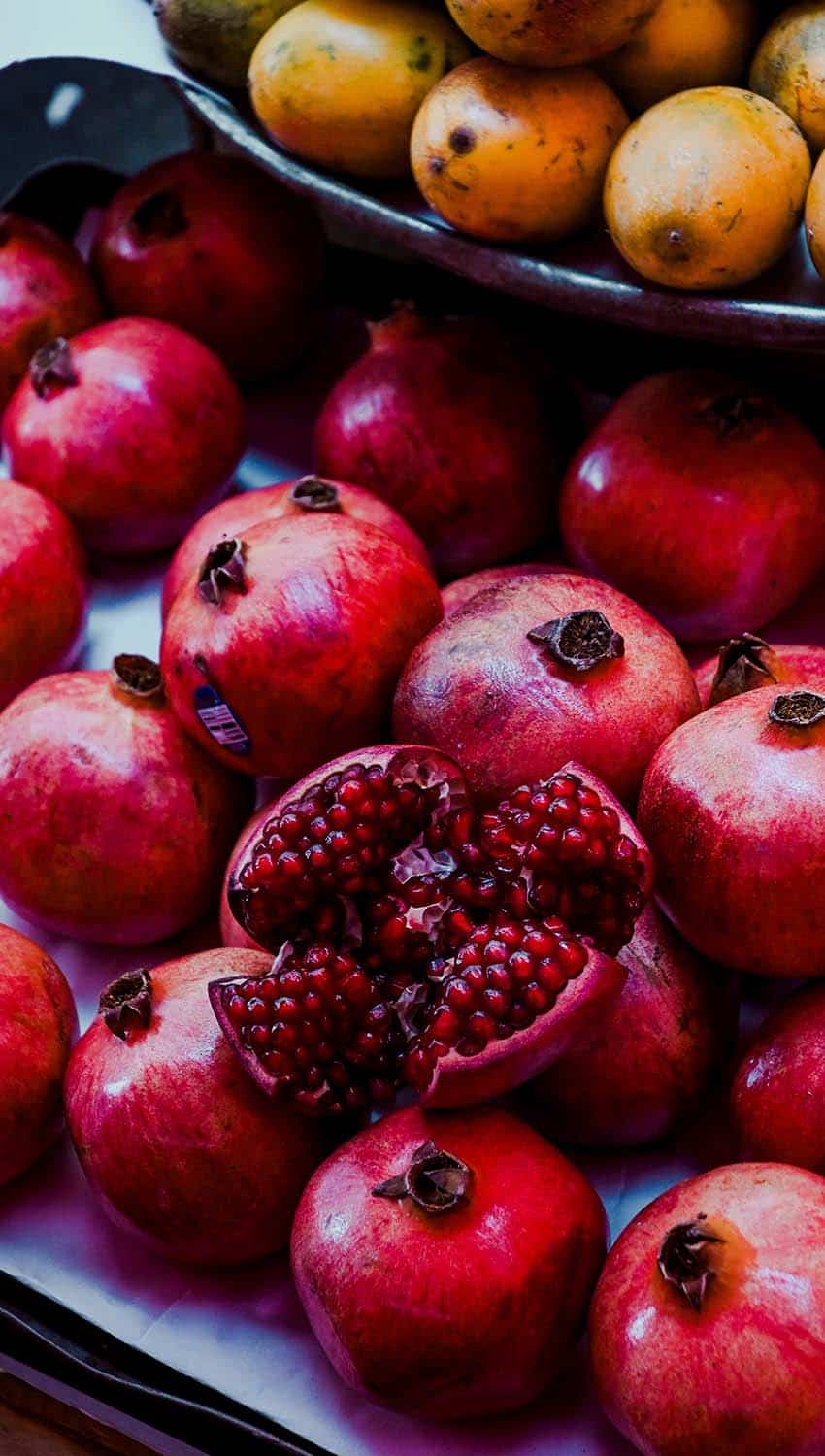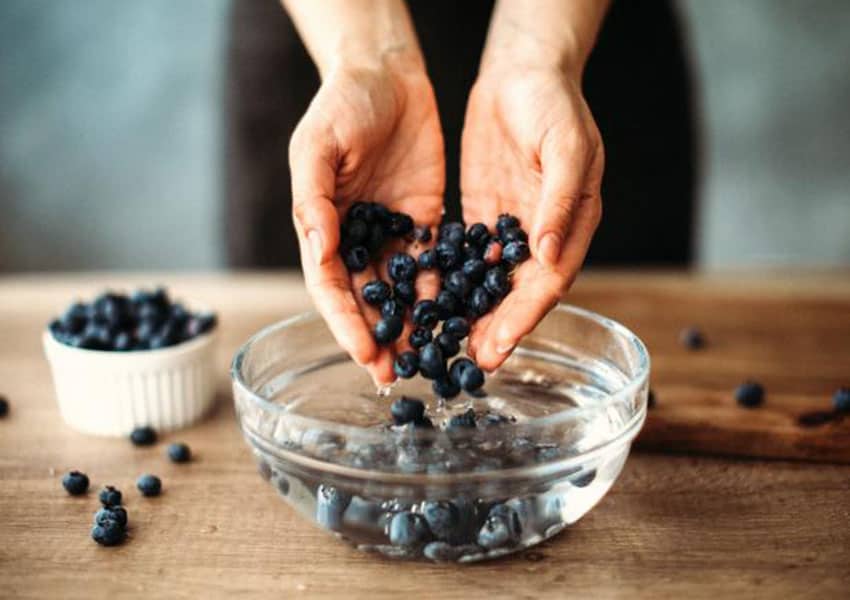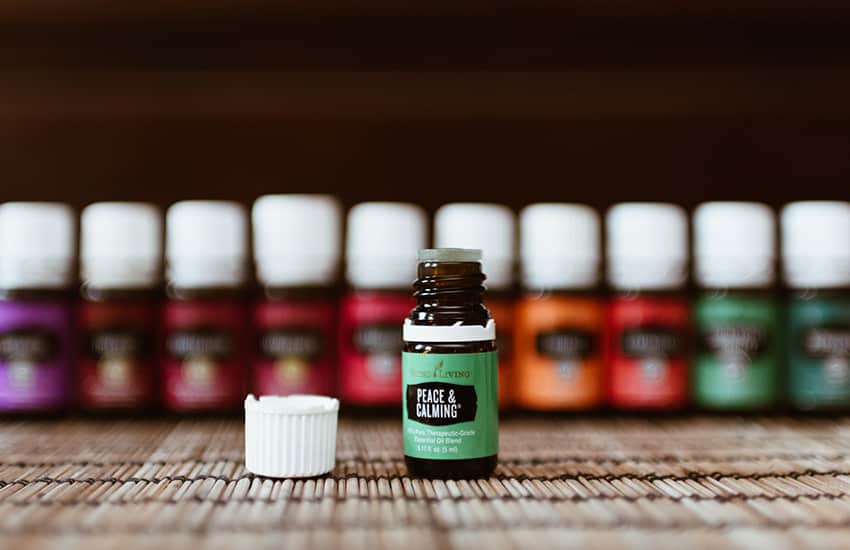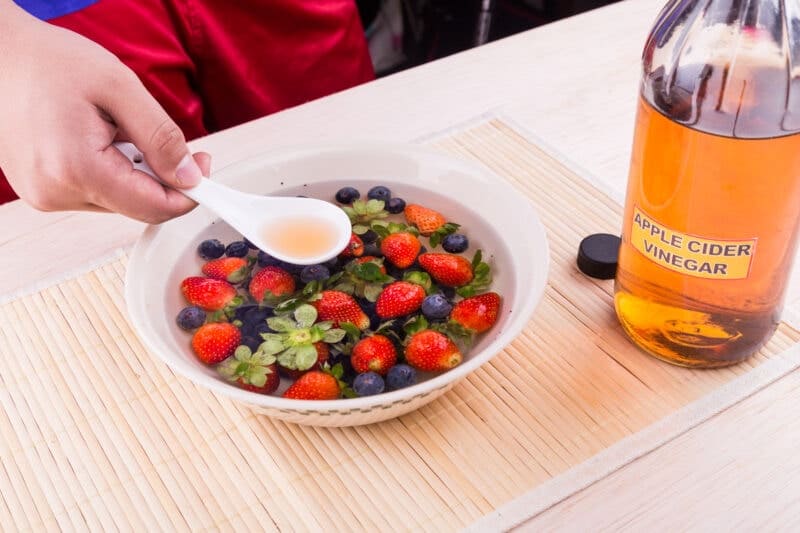Food Safety 101: cleaning produce the right way

What’s the one thing no “tropical table” should be without? (No, it’s not mangos.) Disinfectant. Bactericida.
Whether it’s that very big or really tiny blue bottle, a vinegar- or bleach-and-water solution or one of the new citrus seed extract formulas, disinfecting fruits and veggies before you eat them should be a regular part of your kitchen routine.
Why? Because as millions of people find out every year, there are a host of water-borne bacteria found on fruits and vegetables, the most common being salmonella, E. coli and listeria.
Washing with clean water or dish soap won’t remove or affect these bacteria, and even the tiniest trace of any of them can wreak havoc on one’s system and cause a week or more of very uncomfortable symptoms. (Some studies have shown that soaking in clean water for at least two minutes removes “some” Listeria bacteria.)
I never disinfected produce before I moved to Mexico (unless it was to try to remove pesticides, but that’s another topic), and I don’t know anyone in the United States who does. What I remember is being “told” (by whom I can’t say) that disinfecting produce in Mexico before eating it was a nonnegotiable.
Why? Because a) the water used in the fields for irrigation is not clean, and b) even if something has been washed, chances are the water wasn’t purified, taking you back to square one. It’s the same reason that we don’t drink tap water (unless you have a water purification system installed in your house).
I know some of you will say you never disinfect your produce and have had no adverse effects — good for you! That hasn’t been my experience, and recently, a very unpleasant three-week case of typhoid (a form of salmonella) reiterated the importance of disinfecting produce.
But the reality is I don’t really know what I’m doing. How much microbicide should I be using, and in how much water? How long should I be soaking the tomatoes or lettuce, grapes or blueberries in it? If I’m going to peel (carrots) or cook (broccoli) or do both (potatoes), do they still need to be disinfected?
Some folks say colloidal silver — the active ingredient in most microbicides — is harmful; is it? I have no idea about any of this. I just squirt “some” into a big bowl of water, swish it around a bit and then let it soak for a while, like 10 minutes. Or maybe 20? Quién sabe?
So let’s take a look.

The instructions on the big blue bottle of Member’s Mark bactericida say to use 1 Tbsp. of disinfectant for two liters of water and soak for 15 minutes.
That tiny (also blue) bottle of Microdyn recommends a drop to 1 liter of water and a 15-minute soak; the difference is the strength of the active ingredient — ionized or colloidal silver.
A long-proven antibacterial, colloidal silver solutions have been used for wound care in hospitals around the world for decades. While not safe to consume as a dietary supplement, numerous studies say the amounts and size of the microscopic silver particles in disinfectant solutions are excreted by the body in six hours or so with no lasting effects.
Fairly new on the market here in Mexico are “natural disinfectants” made from citrus seed extracts, which have been used for decades by commercial greenhouses and growers. The clear, lightly scented desinfectante natural liquid is found at Sam’s Club or Walmart in a 500 ml. spray bottle.
The label claims it “acts as a powerful antiseptic and broad-spectrum disinfectant, is very effective against a range of bacterial and fungal diseases and eliminates 99% of bacteria.” Directions say to “thoroughly spray” produce and let sit for 15 minutes.
Another option is to make your own produce wash with a simple solution of vinegar and water. The vinegar’s acetic acid level, say some biologists, is enough to kill “most” bacteria and inhibit their reproduction. Other studies say it’s not. You’ll have to decide for yourself.
A few drops of regular chlorine bleach can be used in the same way to make a mild solution if you’re comfortable with that.

Certain essential oils — tea tree, oregano, thyme and cinnamon — contain some antibacterial qualities too. If you’re going this route, be sure to dilute the oils significantly before soaking or spraying your produce.
Since we’re on the topic of food safety, I’ll mention a few other hotspots for food contamination and bacteria growth you may not have realized.
Having a party? Remember that cooked foods should be refrigerated within two hours of cooking. (Less if you’re in the tropics.) Going out to eat at a restaurant with a buffet? The same thing applies. Chances are those little sternos aren’t keeping the food hot enough to prevent bacteria from growing. Be aware.
No matter what your frugal mother told you, leftovers should be eaten within four days. Yes, they may still taste good, but the chances of bacterial growth rise exponentially after 96 hours or so.
And finally a topic that’s been the subject of numerous social media battles: should you rinse chicken before you cook it?
While poultry is known to contain significant amounts of “bad” bacteria (most notably salmonella), cooking it to an internal temperature of 165 F will kill it all. The danger of rinsing chicken (or any other raw meat) before cooking is that those pathogens are spread onto your sink in the water, and also onto faucets from your hands. There they wait patiently for you to wash some dishes or rinse your coffee cup.
One final note: Always remove broken or bruised leaves, stems, berries etc. before disinfecting produce. Those structural breaks allow pathogens to enter the cells, where they’re protected from the effect of whatever microbicide you’re using.

Homemade Produce Wash
- 1 cup distilled white vinegar or apple cider vinegar
- 4 cups water
- 1 lb. produce
Mix water (cool or room temp, not hot) and vinegar in a large bowl.
Sort produce, discarding any broken or bruised leaves, stems, etc. Add produce; let soak 10 minutes, stirring or agitating once or twice. Drain produce and rinse well with clean purified water to get rid of any lingering vinegar flavor or aroma. If not using right away, dry thoroughly after soaking to prevent spoilage.
Janet Blaser is the author of the best-selling book, Why We Left: An Anthology of American Women Expats, featured on CNBC and MarketWatch. She has lived in Mexico since 2006. You can find her on Facebook.
Source: Mexico News Daily

